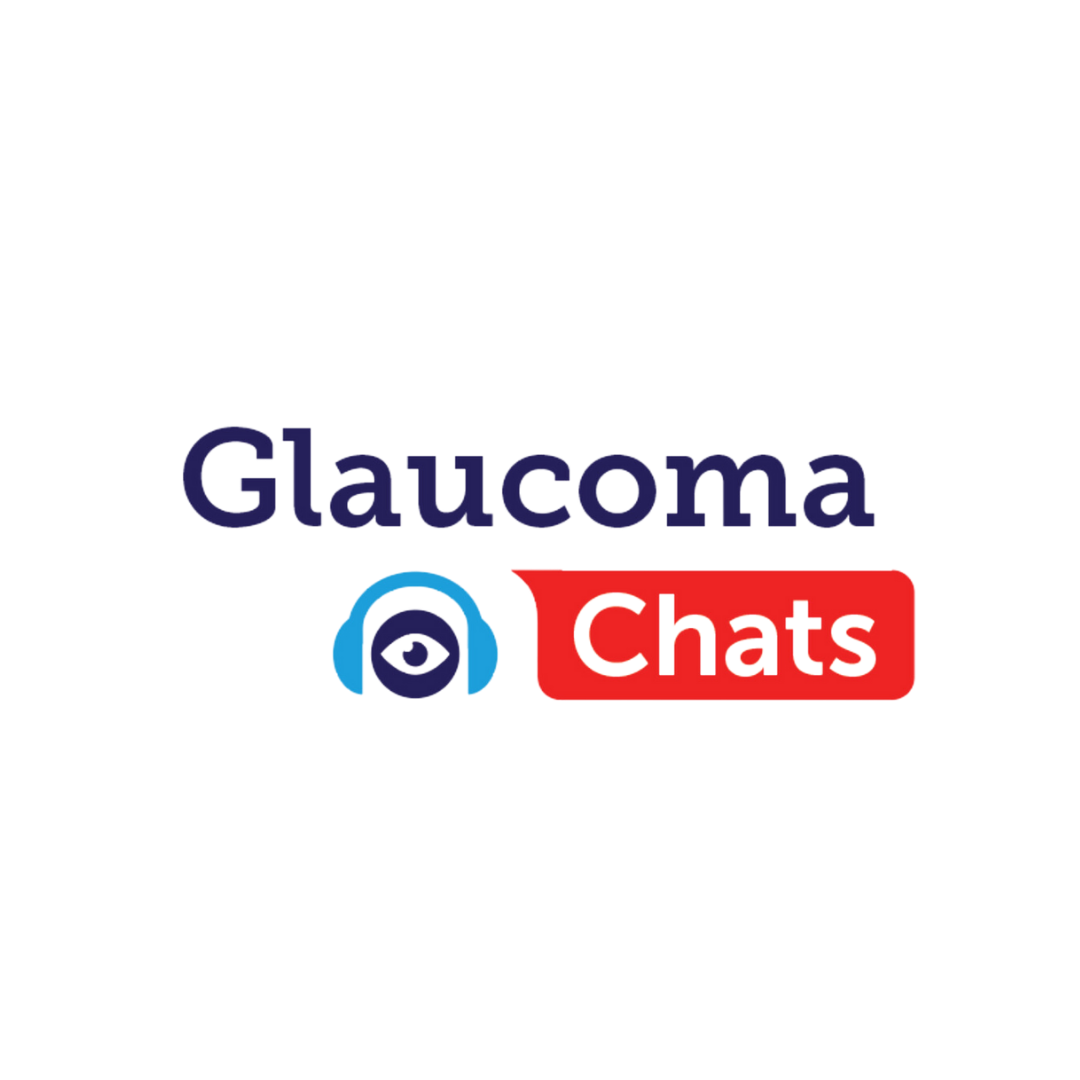Glaucoma refers to a group of diseases that can damage the optic nerve, a bundle of more than one million nerve fibers that carry visual information from the eye to the brain. Its exact causes vary, but a shared risk factor in most types of glaucoma is a rise in intraocular pressure (IOP) from “normal.” Over time, this is believed to damage vision by putting too much pressure on the optic nerve and destroying its delicate fibers and cell bodies. Increased IOP is largely due to a backup of a clear fluid known as aqueous humor that circulates through the front of the eye.
The best treatment for your glaucoma will depend on the type you have, its severity, and how well you respond to drugs, laser treatment, or surgery. While some types of glaucoma require different approaches, almost all therapeutic strategies attempt to lower IOP, the main risk factor associated with most types of glaucoma.
Common Types
Open-angle Glaucoma
Open-angle glaucoma, the most common type, accounts for 70-90 percent of all cases. Most open-angle glaucoma is a chronic, slowly-progressing condition that often produces no symptoms of discomfort or change until a relatively advanced stage.
This is a chronic, slowly-progressing condition. Many factors, including age, structural defects, damage to the trabecular meshwork and/or other drainage systems in the eye, aqueous humor overproduction, or blockages may be responsible for a rise in IOP.
An estimated 3 million Americans have open-angle glaucoma. In the United States, open-angle glaucoma strikes African Americans and Hispanics at higher rates than other ethnic groups.
Angle-Closure Glaucoma
Angle-closure glaucoma, the next most common type, is a largely inherited disorder caused by a too-narrow angle in the passageway where aqueous fluid would normally drain. This type of glaucoma may occur in two ways:
The chronic type progresses slowly and, like open-angle glaucoma, can result in optic nerve damage.
The acute (also called closed-angle) type begins suddenly when the normal flow of aqueous humor between the iris and lens is blocked. This condition is a medical emergency and must be treated immediately. Without treatment, blindness can result in one or two days.
Less Common Types
Normal (or “low”) tension glaucoma can damage the optic nerve and cause vision loss even with normal IOP. Lowering eye pressure through medication sometimes slows the progress of the disease, but this type of glaucoma may worsen despite low pressure. Treatment is generally the same as for open-angle glaucoma with high eye pressure.
Other less common types of glaucoma include congenital glaucoma, juvenile glaucoma, and secondary glaucoma. Learn more about these forms in another BrightFocus brochure, Glaucoma: Essential Facts. Order a copy at 1-855-345-6647 or download at www.brightfocus.org.
Your Treatment Plan
Medicine, laser treatment, and surgery are all effective for lowering IOP and preserving sight; however, not all treatments will work equally well for every individual. You and your doctor must decide on a treatment plan that takes into account your type of glaucoma, its severity, how quickly it’s progressing, and other factors.
If there is only mild optic nerve damage or vision loss, a reasonable goal for therapy initially might be to lower IOP pressure to 20-25 percent below the average of several baseline measurements. If there is more advanced damage, your doctor may set a different goal.
Most physicians initially will prescribe a medical treatment plan (as opposed to laser treatment or surgery) to lower IOP, unless glaucoma medications are not a viable option for you. In that event, laser trabeculoplasty and glaucoma surgery (both described below) may be considered as an initial treatment plan in some patients.
Tell your eye doctor about other health conditions you may have and what other medications and supplements you are taking. Some glaucoma medications could make your condition worse, or may interact badly with a drug you’re already taking.
Also, when discussing a treatment, your doctor should fully inform you of its potential benefits and risks, including possible side effects. Treatment decisions should weigh your comfort (including how well you tolerate a medication or treatment, its side effects,risks, and healing time required) against its effectiveness at lowering IOP. If your treatment involves a medication, it’s important to take it regularly and properly, as prescribed, or it may not work.
What Is a Treatment Plan?
A treatment plan is a plan that you and your doctor agree to as the way to manage your glaucoma. Its details should be included in your medical chart and updated periodically, as needed.
A typical treatment plan will include:
- Family history and risk factors for glaucoma
- Other health conditions/medications
- Diagnosis and baseline information, such as:
- Measurements of IOP and central corneal thickness
- Evaluation of the optic nerve
- Visual acuity and visual field testing
- Functional assessment
- Initial treatment choice(s) and target IOP reduction (%)
- Follow-up intervals (these vary from 3-12 months, based on what your initial status is and whether your target IOP is achieved)
- Up-to-date record of all medical/surgical treatment results, including IOP reduction, side effects, complications, and follow-ups
- Documentation of any adjustments or changes to the plan
Who Should Treat Your Glaucoma?
Treating glaucoma requires specialized skills and knowledge. For starters, it takes someone who can perform a dilated eye examination and use special instruments to look into your eye to assess the structure of your optic nerve. Also, it should be someone who is familiar with all current treatment options. The choice may depend on who is available in your area and/or whether you already have an eye doctor you feel comfortable with.
Ophthalmologists include board-certified physicians who have finished four years of medical school, a one-year internship, and three years of residency training in ophthalmology. As combined medical-surgical specialists, most ophthalmologists are trained to perform laser procedures and surgery; however, not all ophthalmologists do this in practice. Some ophthalmologists specialize in glaucoma.
Optometrists are licensed practitioners who have completed a four-year post-baccalaureate Doctor of Optometry degree program. They perform dilated eye exams and in most states are licensed to perform some procedures and prescribe medicine for glaucoma. Like ophthalmologists, optometrists also sometimes pursue specialized training making them highly qualified to treat glaucoma.
Special expertise may be important if you are diagnosed with a later stage or aggressive type of glaucoma and need advanced treatment options. Glaucoma specialists include ophthalmologists who have had an additional year of fellowship training in glaucoma.
Second Opinions
Often, seeking a second opinion reassures patients when facing a confusing or difficult treatment choice. A “second opinion” is another physician’s review of your condition and/or treatment plan. Getting a second opinion is a well-known medical custom that is recognized in the American Medical Association’s Code of Medical Ethics. If you decide to seek a second opinion, you should not fear reprisal or termination of care.
Treating Glaucoma with Medication
The eye, like the brain, protects itself with a barrier against potentially harmful substances. This blood-ocular barrier makes it difficult for pills or injections to travel through the bloodstream. As a result, most glaucoma medications are topical, meaning they are applied to the eye’s surface using eyedrops or ointments, which are absorbed into the eye’s own circulation.
The Eye’s Drainage Pathways
Most medications reduce IOP by decreasing the aqueous humor in the eye or by increasing its outflow through the eye’s established drainage pathways.The trabecular meshwork is the most direct drainage pathway, designed to dispose of aqueous humor. Its cells are capable of sensing IOP levels and regulating the rate of outflow. However, due to a combination of factors including age, genetics, and damage, the trabecular meshwork sometimes doesn’t work effectively. Drainage by another route, the uveoscleral pathway is indirect by comparison. Aqueous humor seeps through and around a number of tissues, blood vessels, and lymph nodes. For that reason, uveoscleral outflow is sometimes called an “unconventional” pathway; it’s also the pathway that absorbs tears.
Types of Glaucoma Medication
Prescription drugs tend to be divided into “classes” based on how they work. Most of these drugs are available only as eyedrops, except where noted.
About generic drugs. “Generic” refers to the chemical name of a drug, and “brand” refers to its trademarked name. Patents for brand-name formulas expire after a preset number of years (in the United States, usually 20 or 25 years), at which point other companies can manufacture “generic” forms.
Alpha adrenergic (A2) agonists reduce production of aqueous humor and increase its outflow through the uveoscleral pathway. Generic and brand names (in parentheses) include: brimonidine (Alphagan®); dipivefrin (Propine®); apraclonidine (Iopidine®); and epinephrine (Glaucon®, Epifrin® Eppy/N®, Epinal®).
Side effects include such things as blurry vision, fatigue and increases in heart rate and blood pressure.
Beta-blockers works by producing less aqueous humor and decreasing its flows into the eye. Generic and brand names (in parentheses) include: timolol (Betimol®, Ocumeter®, Timoptic®, Timoptic XE®); levobunolol (Betagan®); carteolol (Ocupress®); metipranolol (OptiPranolol®); and betatoxol (Betoptic®).
Beta-Blockers may cause side effects that include low blood pressure, reduced heart rate and shortness of breath.
Biodegradable Drug-delivery Implants
Durysta™, is a long-term, biodegradable eye implant, containing bimatoprost (a prostaglandin analog, see below) that reduces eye pressure in people with ocular hypertension or open-angle glaucoma. Durysta is currently indicated as a single-use implant, and those who receive the implant would not be able to have it re-administered a second time.
The most common side effect reported in those using Durysta™ is eye redness. Other common side effects reported are: feeling like something is in your eye, eye pain, being sensitive to light, a blood spot on the white of your eye, dry eye, eye irritation, increased eye pressure, a loss of cells on the inner layer of the cornea, blurry vision, inflammation of the iris, and headache.
Prostaglandin analogs work as vasodilators, meaning they expand the blood vessels in your eye. This helps aqueous humor leave the eye through the uveoscleral pathway. From there, it is disposed through the lymph system. This class of medication can reduce IOP by an average 18–31 percent with relatively minor side effects, such as eye sensitivity and irritation, as well as flu-like side effects which come and go. Sometimes these drugs cause eye color to darken or change. Generic and brand names (in parentheses) include: latanoprost (Xalatan®); bimatoprost (Lumigan®); travoprost (Travatan®); tafluprost (Zioptan®); unoprostone (Rescula®); and latanoprostene bunod ophthalmic solution (Vyzulta™).
Carbonic anhydrase inhibitors lower aqueous humor volume by inhibiting its production. Generic and brand names (in parentheses) include: [Eyedrops]: dorzolamide (Trusopt®) and brinzolamide (Azopt®); [Oral forms] acetazolamide (Diamox®) and methazolamide (Neptazane®).
When administered as eyedrops, the side effects may include stinging, loss of appetite, and taste changes. When taken by mouth, they are associated with more unpleasant and or dangerous side effects, including depression, stomach problems, and weight loss, and there is an increased risk of serious anemia and kidney stones with long-term use.
Miotics, also called cholinergic agents, cause the pupil to become much smaller in diameter, opening drainage pathways and increasing outflow for reduction in IOP. Generic and brand names (in parentheses) include: pilocarpine (Isopto Carpine®, Pilocar®); echothiophate (Phospholine Iodide®) and an ophthalmic gel ointment, pilocarpine (Pilopine HS ointment®).
Side effects include eye irritation and allergy symptoms as well as increased risk of near-sightedness and cataracts. Side effects may include dermatitis, flu-like symptoms, urinary incontinence, lung congestion, and heart symptoms, including changes in heartbeat.
Prostaglandin analogs work as vasodilators, meaning they expand the blood vessels in your eye. This helps aqueous humor leave the eye through the uveoscleral pathway. Generic and brand names (in parentheses) include: latanoprost (Xalatan®); bimatoprost (Lumigan®); travoprost (Travatan®); tafluprost (Zioptan®); unoprostone (Rescula®); and latanoprostene (Vyzulta™)
Side effects include eye sensitivity and irritation, as well as flu-like side effects which come and go. Sometimes these drugs cause eye color to darken or change, sunken eyes and eyelash growth.
Rho Kinase Inhibitors works by increasing drainage of aqueous humor by improving outflow of the trabecular meshwork. Generic and brand names (in parentheses) include: Netarsudil ophthalmic solution (Rhopressa®)
Side effects may include eye redness, stinging and corneal deposits.
Combination medications include two or more of the above medications that have been combined in a single formulation to achieve better results. They include eyedrops with the following generic and brand names (in parentheses): dorzolamide and timolol (Cosopt®); latanoprost and timolol (Xalacom®); brimonidine; timolol (Combigan™), brimonidine and brinzolamide (Simbrinza™) and netarsudil and latanoprost (Rocklatan™).
Side effects of Cosopt include stinging or burning of the eye and taste change. Side effects of Combigan include the symptoms of beta blockers and alpha agonists. Side effects of Simbrinza Suspension include blurred vision, eye irritation, taste change, dry mouth, and eye irritation. Side effects of Rocklatan include eye redness and stinging.
Choosing the Right Medication
The medication that you and your doctor decide is best for you will depend on a number of factors, including (but not limited to):
- Are you allergic or sensitive to any drugs or their ingredients?
- How effective is it, and does it stay effective over time?
- How quickly does it get results?
- Can it be combined with another medication, now or in the future, for increased effect?
- Will it impact other health conditions (blood pressure, or balance, for example)?
- Will it interact badly with any other medications you are taking?
- Is it convenient?
- What are the side effects, are they typically transient or long-lasting, and can you tolerate them?
- What is the risk of a serious adverse effect or reaction?
- Are you able to administer the medication correctly at home?
About Generic Drugs
“Generic” refers to the chemical name of a drug, and “brand” refers to its trademarked name. Patents for brand-name formulas expire after a preset number of years (in the United States, usually 20 or 25 years), at which point other companies can manufacture “generic” forms.
About Side Effects and Adverse Reactions
Before starting your medication, you should learn about any potential side effects—some of which can be serious.
Serious or dangerous side effects may require you to discontinue the drug and/or seek immediate medical attention. These are listed in patient package inserts that come with your medication and will be explained at your doctor’s office or pharmacy. You should be given instructions and a clear plan to follow by your doctor in case you start experiencing dangerous side effects.
Allergies and drug interactions sometimes are to blame for side effects. Be sure to tell your doctor if you are allergic to any drugs. It is essential that your doctor reviews all medications and supplements you are taking before prescribing your glaucoma medication. Not all drugs interact well, and there is the potential for one to intensify or cancel out the effects of another, or to cause an adverse reaction when used in combination.
Ocular surface disease (OSD) is a chronic or allergic reaction to medication that is sometimes triggered by preservatives in drugs. It causes dry eyes, redness, tearing, burning, and other ocular symptoms. The more eye medications a person uses, the more likely OSD is to develop. Several glaucoma medications are available in preservative-free forms. This may help when using several different eye medications.
Using Eyedrops Correctly
The right approach helps eyedrops work effectively and prevents waste.
- Face the ceiling when you begin. Lie down or tilt your head way back in a comfortable chair that supports your neck.
- Before tipping the bottle, brace your hand against your forehead to hold it steady for better aim.
- Pull down your lower eyelid to make a bigger target area.
- Hold the bottle from a height of about 2 inches over the side of the eye your nose is on and gently tip it over, letting gravity deliver one drop. Do not squeeze unless necessary.
- Once the drop hits, release the lid and close your eye for 60 seconds. Try not to blink.
- To minimize side effects and irritation, squeeze hard on the side of your nose near the inner corner of your eye. That helps keep the medication out of your tear ducts and nose. Also blot off any medication that falls on surrounding skin.
- If you need to apply more than one type of drop, wait at least 2-5 minutes so the second drop does not wash the first one away.
Remember that following your doctor’s treatment plan daily is your best chance at preserving the vision you still have.
Treating Glaucoma with Surgery
Surgery is an effective way to lower IOP, and in some cases can normalize pressure for a period of time without the use of medications. However, surgery is only rarely chosen first as a treatment option due to the risk of complications. Another reason is the consequences of a poor outcome, while extremely rare, tend to be graver with surgery than with medications. Thus, your doctor is likely to recommend surgery only if you are unable to use eyedrops or other medications, or if they don’t work well enough on their own to lower IOP.
Most surgical procedures for glaucoma lower IOP by reshaping tissue to clear blockages, or by opening new channels for aqueous humor to drain. Less frequently, surgery is used to decrease aqueous humor production by refashioning the ciliary body, the part of the eye where aqueous humor is produced.
Of all glaucoma treatment approaches, surgery is the most likely to lower IOP sufficiently on its own—thus reducing or eliminating the need for medication. Unfortunately, that doesn’t happen in all cases. There is no guarantee that any procedure you choose will be successful in lowering IOP initially, or at all. Nor will your doctor be able to tell you for sure how a treatment will work. In most cases, however, it may be possible to repeat the procedure or try another one if the target IOP reduction is not achieved.
You and your doctor must weigh the benefits and risks of many different types of surgery to determine which one is right for you. Some factors that might affect your decision include:
- Severity of your glaucoma
- Presence of cataracts
- Whether you have had prior eye surgery
- Susceptibility to inflammation
- Your age and other health conditions
- Any physical limitations
- How well you tolerate eye drops
- Social support systems and ability to manage post-operative care and follow-up visits
Laser Treatment
Laser has been used as a tool for more than half a century. A focused light beam penetrates tissue quickly and accurately, and as a result, laser procedures tend to be associated with less pain, swelling, and scarring than traditional surgery. There also may be a shorter recovery time because blood vessels and nerve endings are effectively sealed off.
Laser procedures vary in terms of the average IOP reduction they can achieve, which depends on many factors, including age of the patient, the type of glaucoma, and other medical conditions that may be present.
A laser procedure is quite safe, with few complications, and in most cases, a laser procedure can be safely repeated, if necessary. The most common side effects are temporary eye irritation and blurred vision. There is a small risk of developing cataracts.
Trabeculoplasty
The most common laser procedure used for open-angle glaucoma, this procedure facilitates easier drainage. It can be performed in several different ways.
- Selective laser trabeculoplasty (SLT) uses a low-level laser to selectively target cells in the trabecular meshwork and widen the channels for fluid to drain. Because it leaves portions of the meshwork intact, the procedure may be repeated.
- The higher-powered argon laser trabeculoplasty (ALT) focuses a high-energy laser at the trabecular meshwork to create new openings through clogged passageways. Usually only half the channels are treated at one time and the remainder later, if necessary, to prevent the chance of overcorrection.
- Micropulse laser trabeculoplasty (MLT) is a new procedure that delivers laser energy in short microbursts. It lowers pressure comparably to SLT and ALT, but there may be less inflammation and it could help to minimize the spikes in eye pressure that can sometimes occur after a laser procedure.
Laser peripheral iridotomy is frequently used to treat angle-closure glaucoma, in which the angle between the iris and the cornea is too small and blocks fluid flow out of the eye. A laser creates a small hole in the iris to allow fluid drainage.
Procedures Targeting the Ciliary Body
Laser procedures may be used to reduce the volume of aqueous humor production, thus lowering IOP. This is done by selectively targeting and destroying cells in the ciliary body. The laser procedures that accomplish this include cyclophotocoagulation, cyclophotoablation, ciliary body ablation, or cyclophototherapy. Typically, these procedures are used to treat more aggressive or advanced open-angle glaucoma that has not responded to other therapies. Multiple treatments are required.
Scatter Panretinal Photocoagulation
This laser procedure destroys abnormal blood vessels in the retina that are associated with neovascular glaucoma.
Conventional Surgery
Conventional surgery for glaucoma, sometimes called “filtering surgery,” lowers IOP by creating alternative pathways for aqueous humor to drain. In many of these procedures, the conjunctiva, or transparent membranes on the eye’s surface, are lifted and then replaced. They serve as a “filter,” or cover, over the eye’s new draining opening. That protects the eye and makes the increase in outflow much more gradual, which helps to stabilize eye pressure.
Trabeculectomy
This procedure removes a tiny portion of the trabecular meshwork to create an alternative drainage channel. An incision is made in the front of the eye where the iris, the colored portion, meets the sclera, the white membrane covering the eyeball.
The conjunctiva (defined above) covers the sclera. Your eye surgeon will create a temporary flap-like opening through both layers, remove a small amount of trabecular meshwork tissue that lies beneath, and then replace the flap loosely.
Aqueous humor flows through this new opening and is absorbed into blood vessels surrounding the eye. As it flows to the eye’s surface, the aqueous humor creates a small bubble, or fluid-filled blister, known as a “bleb.” Typically this is located on the white surface of your eye and mostly covered by your eyelid. The bleb is not visible, except perhaps on close inspection, but is a reassuring sign that the procedure is working.
A successful trabeculectomy requires “tricking” the eye into not repairing the enlarged drainage opening that lies underneath the bleb. This is done with special sutures and postoperative eye drops that manipulate healing. In most cases, after about 6-8 weeks, the eye gets used to its new drainage system and stops trying to close off the opening.
If the new drainage channel permits too much fluid to drain through it, abnormally low IOP could result. Abnormally low IOP, or hypotony, can cause the parts of the eye to become distorted, affecting vision. The problem may correct itself in time, or in some cases, follow-up or repeat surgery may be needed.
Potential short term-side-effects include blurred vision, bleeding in the eye and infection. Long-term effects may include worsened cataracts and the sensation of a foreign body in the eye. A buildup of fluid in the back of the eye may cause some shadows in vision.
Trabectome®
This outpatient surgical procedure is used for open-angle glaucoma. After the eye is numbed, a small instrument creates a tiny incision in the cornea, which is the outer transparent structure at the front of the eye, and a piece of the trabecular meshwork is removed to increase fluid drainage. No permanent hole or bleb is left on the eye. Trabectome surgery normally does not have the side effects associated with a trabeculectomy, although some bleeding may occur during the procedure.
Peripheral Iridectomy
Eye doctors use this procedure for angle-closure glaucoma. The doctor removes a small section of peripheral iris by incision, which allows fluid to drain more easily from the eye.
Canaloplasty
This procedure uses a small incision to gain access to Schlemm’s canal, the passageway into which aqueous humor flows from the trabecular meshwork. Then a microcatheter (a tiny flexible tube) is inserted to clear a channel though Schlemm’s canal. Sometimes a sterile, gel-like material is inserted to further expand the passageway. Canaloplasty is safe and effective alternative at achieving long-term IOP reductions with reduced risk of infection.
Drainage Implant Devices
Implants include tubes, shunts, and other devices that are placed in your eye to create a new drainage channel. Your doctor may suggest an implant when other forms of surgery haven’t been successful.
Typically, an implant device features a thin tube or solid filament connected to a small plastic “plate.” In appearance, this looks like a large solid or flexible needle that has a shallow dish at its end. The plate is positioned on the outside of the eye (towards the back), under the conjunctiva, and the tube extends into the front chamber of the eye, where aqueous humor normally drains. The fluid drains through or along the tube or filament and collects around the plate at the back of the eye, where it is gradually absorbed by capillaries and the lymphatic system and transported out of the eye.
Possible side effects include infection, failure of the tube shunts and other uncommon and rare complications such as bleeding inside the eye and double visions.
Glaucoma Surgery for Infants
Goniotomy is used almost exclusively for infants with congenital glaucoma. In this procedure, the doctor inserts a tiny blade through the cornea to cut the trabecular meshwork. This procedure allows the eye fluid to flow normally out of the eye.
Trabeculotomy is also used for infants with congenital glaucoma. The doctor makes an incision in the outer portion of the eye and uses a tiny probe to break through the trabecular meshwork. Eye fluid is then able to drain out of the eye, keeping eye pressure in a more normal range.
Combined Glaucoma and Cataract Surgery
Both cataracts and glaucoma are vision problems of aging, and an estimated one-fifth of all cataract removal procedures in the U.S. are performed on individuals who also have glaucoma or elevated IOP. Now there are several ways to accomplish both corrective surgeries in one operation. The decision of performing a combined approach and the type of glaucoma surgery, will depend on various factors including the type of glaucoma and its severity. Talk to your doctor if this option interests you.
Preparing for Surgery and Recovery
Your doctor has the responsibility to evaluate and document your need for surgery, explain its risks and benefits, and obtain informed consent—which shows you understand and give your permission. She should review all your current medications and rule out allergies to any anesthesia and/or antibiotics that may be used.
Ask for detailed written instructions about where your surgery will take place and “dos and don’ts” in the days before and following the procedure. You won’t be able to drive home, so someone needs to accompany you or pick you up from the hospital or surgical center.
In the days following the procedure, your eye will be sore and bruised, and your vision may be blurry. That should clear up within a couple of weeks. Written discharge instructions should alert you to signs of infection, or other dangers. They should also give the time and place of your follow-up appointment.
Other Things You Should Know
While there’s still no cure for open-angle glaucoma, there are many ways to minimize the damage caused by this disease. Advanced technologies are making it possible to detect glaucoma early enough to avert vision loss for decades and even an entire lifetime. Vision scientists continue to look for new treatments that may be more efficient and convenient.
Paying For Your Treatment
If you are uninsured and/or worried about paying for your treatment, speak to your doctor or someone on their staff. They may consider using a less expensive or generic medication that’s effective, or might refer you to local programs and organizations that can help.
BrightFocus Foundation publishes a list of pharmaceutical companies with Glaucoma Prescription Assistance Programs. Call our toll-free number, 1-855-345-6647, to request a copy or visit www.brightfocus.org/glaucoma/article/financial-aid-glaucoma-medications.
About Clinical Trials
Evidence about a treatment’s risks and benefits must be gathered from clinical studies in humans before the U.S. Food and Drug Administration (FDA) will approve a new drug or technology for market. Clinical studies depend on people who volunteer. In return for participating, your treatment costs will usually be free and sometimes you will even compensated for your involvement.
If you are interested in participating in a clinical trial, talk with your doctor about the possible risks and benefits of participating and if there are any in your area that seem appropriate. Or go to www.brightfocus.org/clinical-trials to learn more.
For more information:
Visit our website: www.brightfocus.org/glaucoma
Or call: 1-855-345-6647
Para información en español, visite www.brightfocus.org/espanol
About BrightFocus Foundation
BrightFocus Foundation is a premier global nonprofit funder of research to defeat Alzheimer’s, macular degeneration, and glaucoma. Through its flagship research programs — Alzheimer’s Disease Research, Macular Degeneration Research, and National Glaucoma Research— the Foundation has awarded nearly $300 million in groundbreaking research funding over the past 51 years and shares the latest research findings, expert information, and resources to empower the millions impacted by these devastating diseases. Learn more at brightfocus.org.
Disclaimer: The information provided here is a public service of BrightFocus Foundation and is not intended to constitute medical advice. Please consult your physician for personalized medical, dietary, and/or exercise advice. Any medications or supplements should only be taken under medical supervision. BrightFocus Foundation does not endorse any medical products or therapies.
- Glaucoma Surgery
- Treatments










